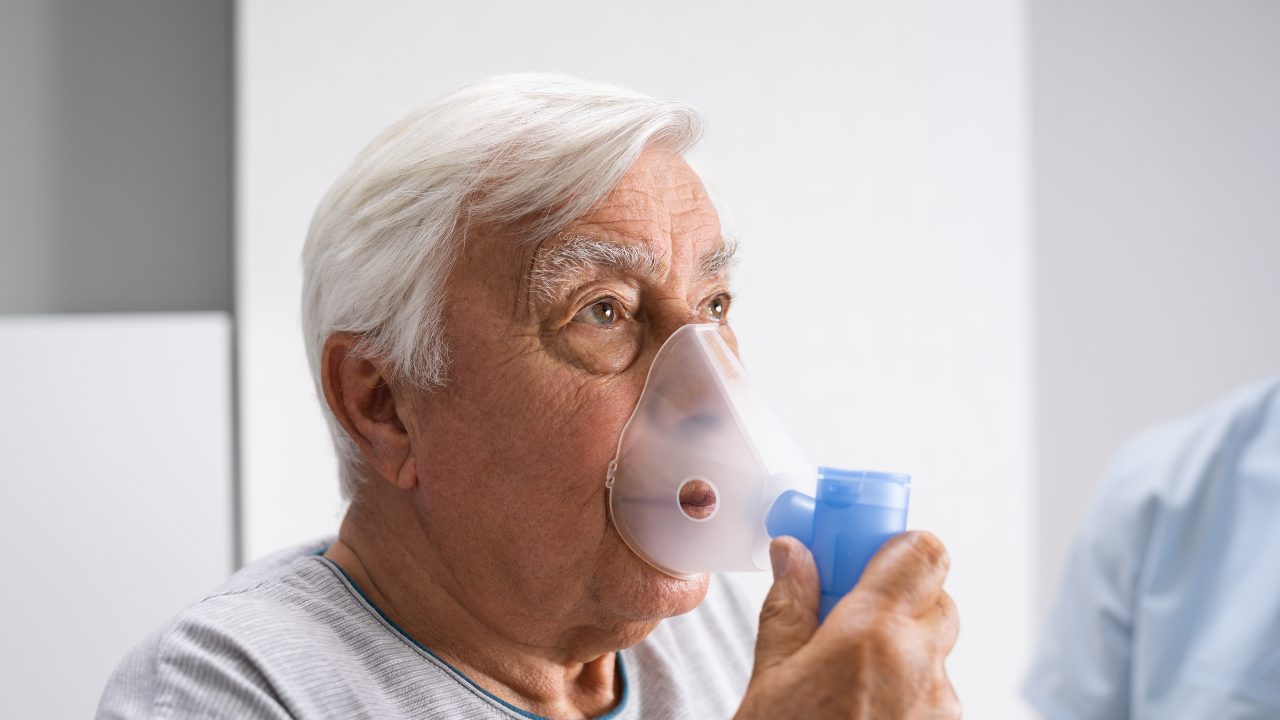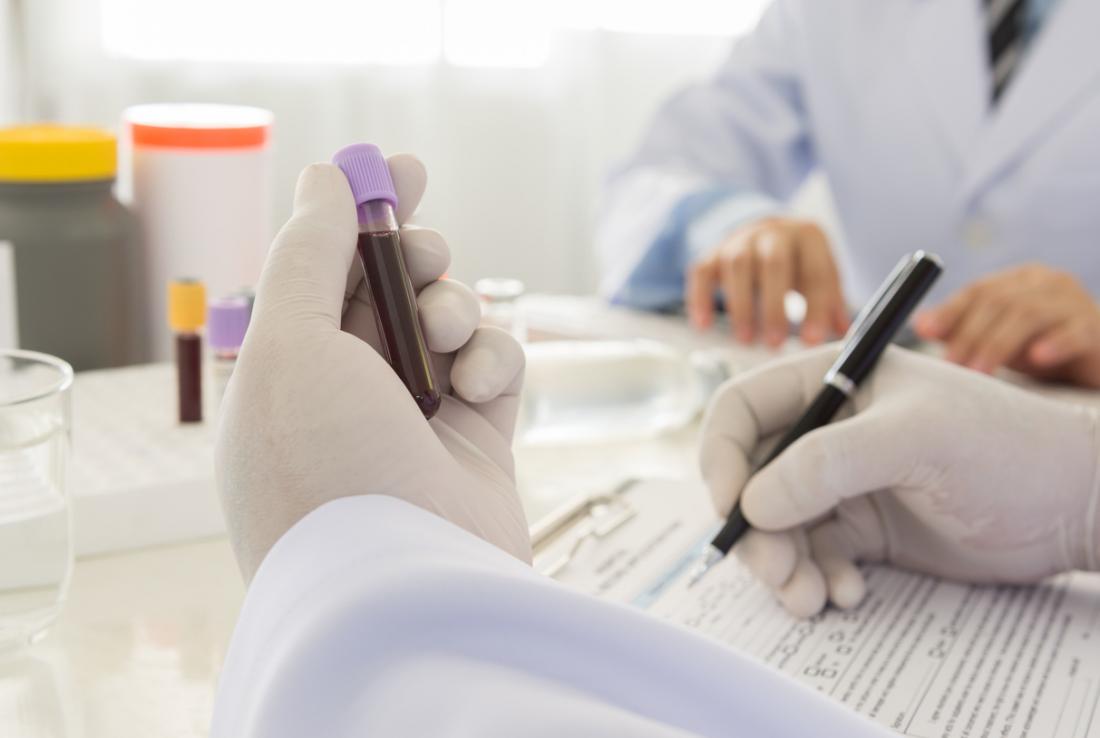What is COPD?
Chronic obstructive pulmonary disease” (COPD) is a term for certain types of irreversible lung and airway damage that block (obstruct) your airways and make it hard to breathe. A chronic lung disease called chronic obstructive pulmonary disease (COPD) limits airflow, making breathing difficult. It frequently occurs when the lungs’ small airways or sacs sustain injury. Smoking and prolonged exposure to dangerous particles or chemicals, such as air pollution, are the most frequent causes.
Types of COPD
The most prevalent kinds of COPD are Chronic Bronchitis and Emphysema, which commonly coexist. Less prevalent variants include Bronchiectasis and Asthma-COPD Overlap Syndrome (ACOS).
Chronic Bronchitis
Chronic bronchitis occurs when the bronchial tubes, which transport air to and from your lungs, become inflamed for an extended period. It is generally denoted by:
- Persistent Cough with Mucus – People with chronic bronchitis frequently cough up a lot of mucus, referred to as a “productive cough.”
- Airway blockage – The swelling and mucus accumulation constrict the airways, making breathing difficult, resulting in wheezing and shortness of breath, particularly during intense physical activities.
- Frequent Infections – Respiratory infections such as the flu and pneumonia are more common because the airways struggle to remove mucus.
Chronic bronchitis is generally caused by prolonged exposure to irritants, particularly cigarette smoke, which accounts for the majority of cases.
Emphysema
Emphysema develops when the little air sacs called alveoli in the lungs are progressively damaged. The key features include:
- Loss of Elasticity – The alveolar linings break down, resulting in bigger air spaces that make it difficult to exhale air, keeping it in the lungs and limiting oxygen intake.
- Breathlessness – As emphysema advances, patients have shortness of breath, which can begin during physical activity and subsequently occur at rest.
- Restricted Airflow – Damaged alveoli reduce airflow, making daily tasks more challenging.
Emphysema is mostly caused by smoking, although air pollution and hereditary disorders such as alpha-1-antitrypsin deficiency can also play a role.
Other Types of COPD
Bronchiectasis
Bronchiectasis, while not as well-known as COPD, is characterized by ongoing airway expansion and destruction. This frequently occurs because of:
- Recurrent Infections – The damage causes frequent lung infections, prolonged coughing, and mucus production.
- Other conditions – These might be related to illnesses such as cystic fibrosis or arise for unexplained reasons.
Asthma-COPD Overlap Syndrome (ACOS)
ACOS is a combination of asthma and COPD symptoms in one person. It has the following characteristics:
- Combined Symptoms – Patients exhibit symptoms of both asthma and COPD, making breathing even more difficult and leading to frequent flare-ups.
- Different Treatment Approaches – Managing ACOS frequently requires a mix of medicines that manage both asthma and COPD symptoms.
Symptoms
COPD symptoms often develop gradually, and many people may not notice any major concerns until they are in their late 40s or 50s. Early symptoms might be minor, and some people may be unaware they have the illness.
Here’s a list of common COPD symptoms:
- Feeling short of breath – As the condition advances, breathing may become more difficult, particularly during physical activity and even during rest.
- Chronic Cough – A prolonged cough with mucus (sputum) is a common symptom. It might start as a “smoker’s cough” and worsen with time.
- Wheezing – A whistling or wheezing sound when breathing is typical and indicates blocked airflow.
- Chest Tightness – Many people report feeling tight or pressure in their chest.
- Exhaustion – Low oxygen levels can result in exhaustion and a lack of energy.
A few less common COPD symptoms are as follows:
- Swollen Ankles – Fluid retention, especially in the latter stages of COPD, can cause edema, particularly in the ankles.
- Unwanted Weight Loss – As the condition progresses, weight loss may occur owing to a decrease in appetite and energy levels.
- Frequent Respiratory Infections – People with COPD are more susceptible to lung infections, which can exacerbate symptoms.
Exacerbations
COPD can sometimes cause flare-ups, in which symptoms worsen substantially. Infections, pollutants, and cold weather can all contribute to these episodes. During an exacerbation, patients may have more severe shortness of breath, chest discomfort, changes in the volume and color of sputum, and, in rare cases, fever.
If you develop any of these symptoms, particularly if you are over 35 and have a history of smoking or exposure to lung irritants, visit a doctor. Early detection and therapy can help decrease illness progression and improve quality of life.
Risk Factors
Recognizing the Chronic Obstructive Pulmonary Disease risk factors is critical for both preventing and treating its development. Environmental exposure, genetic predisposition, and underlying health issues are all significant risk factors for chronic obstructive pulmonary disease.
- Smoking and Tobacco Smoke Exposure – Smoking is by far the leading cause of COPD. A large number of COPD patients have a history of smoking. Both direct smoking and secondhand tobacco smoke can cause long-term lung harm.
- Environmental Air Pollution – Long-term exposure to environmental contaminants such as fumes, dust, and chemicals can raise the chance of getting COPD. Indoor pollution from cooking with solid fuels in inadequately ventilated dwellings constitutes a significant concern in underdeveloped nations.
- Occupational Exposures – Certain professions, particularly those that involve dust, chemicals, or fumes, increase the risk of acquiring COPD. Mining, construction, and agriculture are all professions that frequently expose people to these dangerous compounds.
- Genetic Factors – Genetics can expose certain people to COPD, particularly those with Alpha-1 Antitrypsin Deficiency, a disorder that leaves the lungs more sensitive to injury. Family history may also raise the risk.
- Prior Respiratory Conditions – A history of asthma or many severe respiratory infections, particularly in infancy, might raise the risk of getting COPD later in life.
- Age – The risk of COPD increases with age, particularly in people over 45, as the damage from risk factors accumulates over time.
- Other Health Conditions – Conditions such as heart disease or obstructive sleep apnea can impair lung function and increase the likelihood of developing COPD. Managing these can assist in reducing the overall Chronic Obstructive Pulmonary Disease risk factors.
Diagnosis
A quick and correct diagnosis is critical for properly controlling COPD. This section provides a complete overview of COPD diagnosis methods, concentrating on symptom assessment, physical examinations, and numerous diagnostic tests.
Symptoms Assessment
The first step in diagnosing COPD is to assess the patient’s symptoms. Common signs include:
- Shortness of breath, particularly after intense exercise, tends to worsen over time.
- Chronic cough is usually accompanied by mucus or phlegm.
- Wheezing is a high-pitched sound produced when breathing owing to airway tightness.
- Chest tightness refers to a sense of pressure or pain in the chest.
- Fatigue is a continuous loss of energy that impairs everyday tasks.
Patients frequently overlook these symptoms until they significantly interfere with everyday living. Therefore, early detection through patient history is crucial.
Physical Examination
A comprehensive physical examination helps to confirm results from the patient’s history. The healthcare providers will:
- Listen for abnormal lung sounds – They use a stethoscope to listen for wheezing or diminished breath sounds.
- Assess breathing patterns – Doctors use respiratory rate and effort to determine the severity of COPD.
- Examine the usage of auxiliary muscles – Increased exertion when breathing might indicate more advanced illness stages.
It’s worth mentioning that many early-stage COPD patients may seem normal on a physical examination.
Diagnostic Tests
COPD diagnosis methods are validated using measures such as pulmonary function testing and imaging. Key tests include:
Spirometry
Spirometry is the primary test for diagnosing COPD. It measures:
- The volume of air expelled during the first second of forced breathing is known as the Forced Expiratory Volume in One Second (FEV).
- Forced Expiratory Volume in One Second (FEV1) refers to the amount of air evacuated during the first second of forced breathing.
- The FEV1/FVC ratio helps to confirm airflow restriction. A ratio lower than 70% generally indicates COPD.
Imaging tests
- Chest X-ray: Used to rule out other illnesses but not to diagnose COPD.
- CT scan: Provides comprehensive lung pictures to diagnose emphysema, which is commonly linked with COPD.
Arterial Blood Gas Analysis
This test examines blood oxygen and carbon dioxide levels to evaluate lung function and assess whether oxygen therapy is necessary.
Additional Evaluations
In rare circumstances, further testing may be necessary.
- Screening for Alpha-1 Antitrypsin Deficiency – Because COPD is hereditary, it is especially important for younger patients or those with a family history.
- Exercise Tests – Consider the 6-minute walk test, which assesses how COPD affects physical endurance.
Differential Diagnosis
Because COPD symptoms are similar to those of asthma and heart failure, COPD diagnosis methods must be used with caution to distinguish between these disorders. A detailed medical history, symptom examination, and responsiveness to bronchodilator treatment all contribute to an appropriate diagnosis.
Treatment
Although there is no cure for COPD, various treatment options exist to help manage symptoms, improve quality of life, and reduce the disease’s development. These include drugs, lifestyle modifications, pulmonary rehabilitation, oxygen therapy, and surgery.
Medications
Medications are an important aspect of treating COPD symptoms and flare-ups. Some key kinds are:
Bronchodilators
These relax the muscles in your airways, making breathing easier.
Corticosteroids
Combined Inhalers
Lifestyle Modifications
- Smoking cessation – Quitting smoking is the most crucial step since it decreases disease development and improves outcomes.
- Diet & Nutrition – A well-balanced diet might help you feel better overall. It is frequently advised that you eat smaller, more frequent meals and follow a Mediterranean diet rich in fruits, vegetables, and healthy fats.
- Physical activity – Regular exercise tailored to your abilities will help you maintain lung function and overall health. Walking or cycling, with medical counsel, is frequently useful.
Pulmonary Rehabilitation
Pulmonary rehabilitation is a planned program that includes education, exercise, and support. It improves exercise tolerance, symptoms, and quality of life for COPD patients.
Oxygen Therapy
Oxygen treatment can help people with severe COPD and low oxygen levels live longer and live more comfortably. It is commonly supplied by nasal tubes or a face mask, but because of the risk of fire, it must be closely monitored.
Surgical Interventions
In extreme situations where other therapies fail, surgery may be considered. The surgical COPD treatment options include:
- Lung Volume Reduction Surgery
Removing damaged lung tissue can enhance lung function and make it easier to breathe.
- Bullectomy
This surgery involves removing big air gaps (bullae) that make breathing difficult.
- Lung Transplantation
In severe circumstances, lung transplantation may be a possibility for patients who have not responded to previous therapies.
COPD Causes
Chronic obstructive pulmonary disease (COPD) is primarily caused by a variety of risk factors and exposures. The leading causes of COPD are:
- Cigarette smoking is the leading cause, accounting for up to 90% of COPD cases.
- Long-term exposure to secondhand smoke raises the chance of developing COPD.
- Living in high-pollution locations, such as urban smog or near industrial pollutants, dramatically increases the chance of developing chronic obstructive pulmonary disease.
- Constant exposure to dust, chemical fumes, and other irritants at work can harm the lungs and cause COPD.
- In underdeveloped countries, cooking or heating solid fuels in poorly ventilated areas is a major risk factor for chronic obstructive pulmonary disease.
- Certain genetic disorders, such as alpha-1 antitrypsin deficiency, might expose individuals to COPD.
- Severe childhood respiratory infections may increase the risk of COPD later in life.
- People with asthma, especially smokers, are more prone to suffer from COPD.
- The probability of having COPD increases with age, with symptoms often appearing after age 40.
COPD Management
Smoking Elimination
Quitting smoking is the most crucial step for everyone with COPD. It can significantly reduce disease development and improve lung function. There are several COPD management strategies available to assist in quitting Support groups can help give the motivation and responsibility required to stay smoke-free.
Respiratory Rehabilitation
Pulmonary rehab is a comprehensive program designed to improve the physical and mental well-being of patients with COPD. It contains exercises to increase endurance and strength, breathing methods to improve efficiency, and information on managing symptoms and drugs. This technique enables patients to lead more active, satisfying lives while adhering to COPD management strategies.
Oxygen Therapy
Supplemental oxygen treatment can make a significant impact on the lives of people with low oxygen levels. It alleviates symptoms such as shortness of breath and exhaustion, making it simpler to carry out regular tasks. Depending on the severity of the problem, oxygen might be administered intermittently during physical activity or constantly at home.
Nutritional Support
A balanced diet is essential for persons with COPD to maintain energy levels and stay healthy. Smaller, more frequent meals make it easier to breathe while eating and staying hydrated helps to remove mucus from the airways. Nutritional counseling can provide tailored guidance to satisfy dietary requirements and maintain a healthy weight.
Regular Monitoring and Follow-Up
Regular medical visits are essential for monitoring COPD progression and changing therapy as needed. Routine check-ups allow healthcare practitioners to test lung function, monitor symptoms, and verify that medicines are administered appropriately. Proper inhaler methods are critical for successful symptom control.
Managing Exacerbations
Recognizing the early indicators of a COPD flare-up is critical to avoiding serious problems. Learning to recognize signs such as increasing breathlessness or mucous changes can help people seek medical attention quickly. Creating a specific action plan with your doctor is one of the most significant COPD management strategies for efficiently dealing with flare-ups.
Breathing Techniques and Airway Clearance
Mastering specialized breathing strategies can significantly improve day-to-day comfort for persons with COPD. Controlled coughing helps remove mucus from the airways, and staying hydrated keeps the airways wet and clean. Techniques such as diaphragmatic breathing can also assist enhance lung capacity and make breathing easier in everyday situations.
Prevention of COPD
To successfully reduce the incidence of COPD and improve patient quality of life, it is critical to prioritize core preventative techniques and risk factor management. Here are some helpful methods to avoid COPD.
- Tobacco Cessation – Quitting smoking and avoiding secondhand smoke are among the most effective COPD preventive techniques, as tobacco smoke is a major cause of the disease.
- Environmental Protection – To reduce exposure to indoor air pollution, use cleaner fuels and improve ventilation in your house, which is another excellent COPD preventive technique.
- Vaccination – Stay up to date on influenza and pneumonia vaccines, which can help avoid respiratory infections that can exacerbate COPD symptoms.
- Physical Activity – Regular exercise is essential for improving lung function and general health, making it an effective approach to reduce COPD risk.
- Healthy Diet – A well-balanced diet rich in fruits and vegetables helps improve lung health and lower the risk of COPD.
- Early Diagnosis – Regular health check-ups can aid in the early discovery of respiratory disorders, ensuring quicker treatment and improved control of COPD.
- Education and Self-care – Patients should be well-versed in COPD care, including detecting symptoms and understanding when to seek medical attention.
Individuals who apply these effective preventative techniques can greatly reduce their chance of acquiring COPD while also improving their quality of life.
FAQ
What Can I Do To Avoid Variables That Exacerbate COPD?
To avoid variables that exacerbate COPD, keep away from recognized triggers such as smoking, dust, fumes, and air pollution. Keeping your surroundings clean and utilizing air purifiers can also help reduce exposure to irritants that might exacerbate COPD symptoms.
How Can I Avoid Having A Lung Infection?
To lower your risk of lung infections, obtain the flu, COVID-19, and pneumococcal vaccinations. Good hygiene habits, such as frequent handwashing, can also help avoid respiratory infections.
What Resources Are Available To Help Me Quit Smoking?
There are several programs and drugs available to help you quit smoking. Consult your doctor about tools like behavioral therapy or nicotine replacement choices, which can greatly improve your chances of stopping effectively.
What Are The Symptoms That My Breathing Is Becoming Worse?
Be on the alert for signs such as increased shortness of breath, chest tightness, a change in cough, or more mucus than normal. If any of these symptoms arise, contact your healthcare physician straight away.
How Do I Take My Medication Correctly?
It is critical to adhere to your prescribed medication plan, which most likely includes daily “controller” drugs and “quick relief” inhalers for symptoms. Always with your doctor to verify you’re utilizing the proper dosage and procedure.
What Techniques Can I Use To Manage My Everyday Activities While Living With COPD?
To accomplish everyday duties with COPD, pace yourself and prepare ahead to avoid overexertion. Taking pauses, applying assistive equipment as required, and prioritizing rest can all help you save energy during the day.







